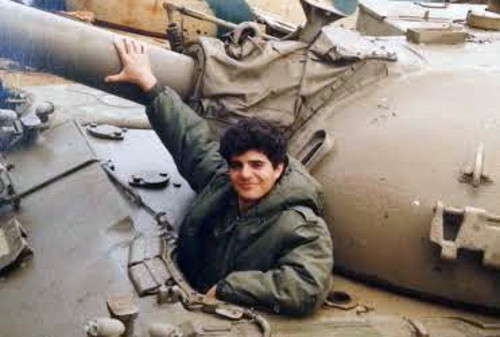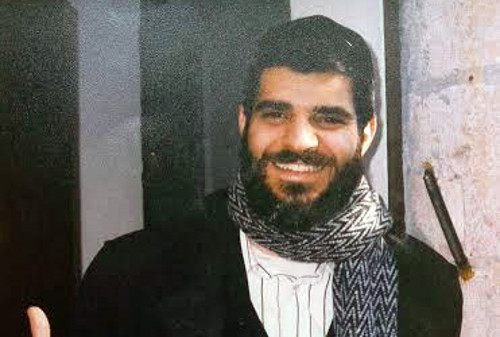 Iran’s Attack on Israel
Iran’s Attack on Israel


6 min read
Curiosity is the beginning of freedom.
I was 20 years old, living the good life as an exchange student in Madrid, and running late to meet Spanish friends at a club one Friday night.
“Where are you coming from?” one of the girls asked nonchalantly.
“I was at synagogue,” I replied.
At that point in my life, synagogue was not a typical hangout, but as a stranger in a foreign land, I was intrigued by the invite my Catholic house mother made to check out my heritage. (After discovering my Jewish roots, she actually tracked down and gave me the name, address, and phone number of the only active synagogue in Madrid. “Go!” she said, “it’s important to have a connection to your people.”)
I went once, liked the easy connection I felt with Spanish Jews, and chose to go to Shabbat services occasionally before going out Friday nights, which explained why I was late that night to meet friends.
“You’re Jewish?” my Spanish friend asked. “That’s so interesting.”
Then she dropped the question bomb.
“I’ve always wanted to know: what is the difference between Judaism and Christianity?”
In a split second her straightforward question revealed how little I knew about my own roots.
I had considered myself a reasonably literate, curious, and informed person, and in a split second her straightforward question revealed how little I knew about my own roots.
“Well,” I offered lamely, “I know that we don’t believe in Jesus.”
The question – and my ignorance – began to bother me. Clearly, I was missing something.
My Catholic 20-something friend knew she was Catholic, cared about its belief system and history, and was palpably excited to discover more about someone else’s religion. I felt her excitement in identifying with her roots. And I acutely felt my lack of connection. I was embarrassed. How could I not know something as basic as the foundation of my own identity? I realized, I was a Jew who had no idea what Judaism was.
I wanted to find answers. But where?
I began to seek “identity through osmosis:” more time with the Jews of Madrid, more young adults events at the community center, a Passover Seder with a traditional family from Morocco.
 In Madrid with my mother
In Madrid with my mother
It was fun. It was cultural. It was sometimes exotic.` Yet returning to New York for my senior year at college, I still didn’t know what the essence of Jewish belief was. So I sought out more Jews.
One of my philosophy professors was a former kibbutznik. “You’ve never been to Israel?” he asked. “Get a taste of the Israeli commune. Explore the land. Try out the beaches at Tel Aviv.” Kibbutz, I discovered, qualified for student loan deferments. After graduating, I jumped.
Starting out as a volunteer at an Israeli munitions base, I was startled by what I found: two sets of dishes in the mess hall, mezuzahs on all the doorways, soldiers my age named Shimon and Dav-eed, and an inspiring, against-all-odds story of Jewish return to the land despite thousands of years of exile and massive Arab aggression. The Jews were not just an interesting identity; we were a nation with a way of life and a beautiful story. My Jewish identity was expanding outward – and arousing new questions.
 Volunteering on Israel army base
Volunteering on Israel army base
If I loved being Jewish, did I need to move to Israel? If not, how would I express my Jewishness? I was a universalist at heart; was I ready to rule out the majority of the world’s women as marriage partners because they weren’t born Jewish? What about the abundance of hatred and persecution that had dogged the Jews throughout history? Wouldn’t it just make sense that Jews voluntarily assimilate and thereby put an end to anti-Semitism?
Travelling with fellow volunteers from the army base, we spent a weekend in Jerusalem’s Old City. We celebrated Shabbat dinner with a local family. We shmoozed with other Jewish travelers and we were having a blast. They recommended things to do and places to visit, including Aish HaTorah and the Discovery program. Aish HaTorah, they described, was a yeshiva, kind of a university for Jewish studies, but with programs for beginners – like us. Discovery was a compelling seminar that laid out the basics of Jewish belief.
This became my first encounter with a full-bodied, wide-angle, rigorous presentation of the meaning of being Jewish. I saw more clearly the miraculous nature of Jewish history, the depth of Torah wisdom, the joy and vibrancy of Jewish homes. I was beginning to find my answers. I stayed for a summer to learn more. I eventually changed grad school plans for a rabbinic degree.
Today I am fortunate to be an educator of Jewish ideas with a Jewish family of my own.
 Studying at Aish HaTorah
Studying at Aish HaTorah
And it began with a question in a Spanish bar.
The power of questioning is a central theme of the Passover Seder. The Haggadah starts by raising four questions and is designed to raise more questions throughout the evening. Why not skip all these questions and just get straight to point?
The Maharal of Prague explains that without a question, information remains irrelevant. A question creates a space, a vacuum that yearns to be filled and enables an answer to enter and take root.
For years I had walked around with opinions about Judaism but it had never occurred to me that I didn’t really know what Judaism was (certainly not with the sophistication I aspired to know what Plato, Karl Marx, or the Civil War was). My Catholic friend’s simple question about Judaism and Christianity created an opening for a beautiful journey.
Passover is a time for freedom, a time when the Jewish people unlock new worlds of potential. It begins with curiosity. Perhaps this is why the Talmud’s term for a Torah scholar is talmid chacham, a wise student – someone open to questions. This Passover, may we merit to be open to our own great, unasked questions and the wisdom journey they point to.
Click here to read more inspiring Passover articles.
